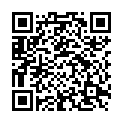|
|
|
| Module code: UI-PH2 |
|
|
4V+1U (5 hours per week) |
|
5 |
| Semester: 2 |
| Mandatory course: yes |
Language of instruction:
German |
Assessment:
Written exam 120 min.
[updated 04.03.2024]
|
E2202 (P211-0118) Electrical Engineering and Information Technology, Bachelor, ASPO 01.10.2018
, semester 2, mandatory course, technical
UI-PH2 (P211-0118, P251-0034) Environmental Technologies, Bachelor, ASPO 01.10.2021
, semester 2, mandatory course
UI-PH2 (P211-0118, P251-0034) Environmental Technologies, Bachelor, ASPO 01.10.2023
, semester 2, mandatory course
|
75 class hours (= 56.25 clock hours) over a 15-week period.
The total student study time is 150 hours (equivalent to 5 ECTS credits).
There are therefore 93.75 hours available for class preparation and follow-up work and exam preparation.
|
Recommended prerequisites (modules):
None.
|
Recommended as prerequisite for:
|
Module coordinator:
Prof. Dr.-Ing. Barbara Hippauf |
Lecturer: Prof. Dr.-Ing. Barbara Hippauf
[updated 13.07.2020]
|
Learning outcomes:
After successfully completing this module, students will: be able to set up differential equations for second-order systems, explain their solutions and carry them out using examples. Analogy systems from mechanics and electrical engineering.
- Students will be able to transfer the methods to coupled systems and higher order systems.
- Students will be familiar with the propagation of various physical quantities via waves. They will be familiar with the wave equation as a solution to differential equations and be able to apply it. They will understand the superposition of waves and their consequences.
- Students will be familiar with the propagation of light as a beam and have a good command of the terms reflection, total internal reflection and refraction. They will be able to describe and calculate images on mirrors, lenses and lens combinations geometrically and mathematically. They will be able to explain the structure and mode of operation of optical devices.
- Students will be familiar with the limits of ray optics. They will be able to use the wave nature of light to explain and apply interference and diffraction phenomena, e.g. when limiting the resolution of optical devices.
- Students will be familiar with the structure of the hydrogen atom in Bohr´s model based on classical physics. Using this, they will be able to explain the shell model and energy levels, as well as spectra. They will know how X-rays are generated and used. They will be able to explain the photoelectric effect with light as a particle.
[updated 04.03.2024]
|
Module content:
Vibrations
Setting up differential equations for different types of vibrations using examples in various mechanical and electronic systems,
Solutions in the undamped and damped spring-mass system,
forced oscillation in the spring-mass system, solution via complex approach, amplitude response and phase response,
Higher-order systems
Two coupled oscillators, setting up differential equations, beat, in-phase and out-of-phase oscillations, coupling of more than two oscillators
Waves
Propagation of waves of different physical quantities, general wave equation,
superposition of waves, standing wave, interference, amplitude modulation, frequency modulation,
Optics
Propagation of light in a medium, laws of reflection and refraction,
Mirrors, lenses in geometric optics, image equation, combination of lenses,
Structure of the eye, magnifying glass, microscope, telescope, analog and digital camera,
Light as waves, phase and group velocity, polarization, Huygens principle, diffraction through slits, interference at double slit and grating, Newton’s rings, resolving power of optical instruments
Atomic Physics
Bohr´s postulate, energy levels in the Hydrogen atom, generating X-rays, using X-rays, especially Bragg reflection in X-ray diffraction and scanning electron microscope,
Photoelectric effect, photons, quantum of action
Thermally generated emission of electrons, heat transfer by radiation.
[updated 04.03.2024]
|
Teaching methods/Media:
Blackboard, lecture notes, presentation
[updated 04.03.2024]
|
Recommended or required reading:
Hering, Ekbert; Martin, Rolf; Stohrer, Martin: Physik für Ingenieure, Springer Vieweg, (akt. Aufl.)
Hering, Ekbert; Martin, Rolf; Stohrer, Martin: Taschenbuch der Mathematik und Physik, Springer Vieweg
Turtur, Claus Wilhelm: Prüfungstrainer Physik, Springer Spektrum
[updated 04.03.2024]
|

